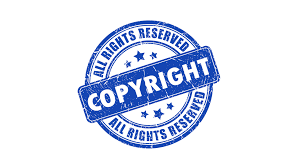Music to the Ears, Law to the Mind: Analysing IPR and Competition Issues Globally
As a devoted music enthusiast, I embark on a unique exploration of the intricate
intersection between Intellectual Property Rights (IPR) and Competition Law,
guided by my profound appreciation for the transformative power of music. In
this digital age, we enjoy unparalleled access to music, allowing enthusiasts
like myself to traverse diverse genres, artists, and cultures with a few clicks.
However, beneath this musical renaissance, a complex legal landscape beckons
exploration. My research endeavours to unravel these challenges, navigating the
diverse legal terrains of India, the United States, and the European Union each
as distinct as the musical styles that resonate with me.
At the core of this symphonic investigation lies the issue of copyright licensing in the digital music streaming industry. How do artists, record labels, and streaming platforms navigate the intricate web of copyright laws? Does this labyrinthine system inhibit creativity or safeguard the rights of creators? These questions drive my analysis of the legal frameworks governing copyright licensing and their profound impact on the competitive dynamics of the music industry.
Moreover, the concept of market dominance echoes loudly in this industry. Are giants like Spotify, Apple Music, or Amazon Music stifling healthy competition, constraining consumer choice, or fostering innovation? This resonates with my admiration for artists who challenge conventions does the legal framework facilitate innovation, or does it encumber their creative spirit?
As I explore these pivotal questions, I draw inspiration from the disruptive energy of musicians who defied norms, just as I aspire to challenge existing paradigms in the realm of IPR and Competition Law. My research endeavours to harmonise these intricate legal notes, offering solutions that strike a delicate balance among creators, consumers, and businesses.
In this paper, I bridge the divide between the poetic world of music and the meticulous domain of law, ensuring the uninterrupted flow of melodies and the unwavering voices of artists, irrespective of jurisdiction or the legal intricacies surrounding them. Together, let us embark on an analytical journey, fostering innovation to ensure that the world of music and its legal custodians exist in perfect harmony.
Introduction
"Times, they are a-changin'," -Bob Dylan
Bob Dylan, capturing the essence of transformation that swirls around us. In a world where digital rhythms have rewritten the rules, we find ourselves on the brink of a legal revolution. This research embarks on a journey into the heart of the digital music streaming industry, where the winds of change are reshaping the landscape of Intellectual Property Rights (IPR) and Competition Law.
Just as Dylan's lyrics spoke to a generation, we aim to speak to the challenges and opportunities of the digital age. Our quest begins by navigating the intricate web of copyright licensing, a symphony of legal principles that can either liberate artists or bind their creations. From the iconic beats of The Clash to the avant-garde sounds of Kanye West, copyright laws are the backdrop against which these artists' masterpieces are played out.
Yet, the landscape is more complex than ever. Market dominance, reminiscent of the rock 'n' roll era, takes centre stage as streaming giants conquer the charts. Platforms like Spotify and Apple Music have rewritten the rules, but questions linger. Are these titans stifling competition, or are they the pillars upon which the industry stands? As we explore the nuances of competition within the digital realm, we aim to unravel these mysteries.
This research is a journey through soundscapes and statutes, guided by the rhythms of creativity and the harmonies of innovation. It explores the legal nuances that resonate within the jurisdictions of India, the United States, and the European Union, striving to harmonise the rights of creators, the choices of consumers, and the interests of businesses.
Like the changing times that Dylan sang about, our research seeks to decipher the shifting dynamics of the digital music industry. As we tread these uncharted waters, we invite you to join us in understanding how the world of IPR and Competition Law is adapting to the ever-evolving music industry. Together, we aim to ensure that music remains a force of inspiration and unity in the digital age, unencumbered by the legal complexities that accompany its journey.
Issues Raised:
What are the fundamental differences in Intellectual Property Rights (IPR) as well as Competition laws related to the music industry in the United States, the European Union, and India? This question delves into the specifics of copyright, licensing, and anti-competitive enforcement mechanisms within these jurisdictions.
How have these legal differences led to recurring cases of copyright infringement in the music industry in the US, EU, and India? This explores the practical implications of divergent IPR laws, drawing on real-world examples and case studies of copyright disputes.
What impact do these recurring copyright infringement cases have on competition within the music industry in these regions? This question examines how the legal landscape affects artists, record labels, streaming platforms, and consumers, considering issues of market dominance, entry barriers, and consumer choice.
What potential solutions or harmonisation efforts can be explored to address these issues and create a more equitable and competitive global music industry? This section delves into policy recommendations and legal reforms that could bridge the gaps in IPR laws and reduce copyright infringement while fostering a vibrant music industry.
Background
The global music industry, a dynamic and culturally diverse landscape, is inextricably tied to the rich tapestry of human expression. It transcends borders, resonates with hearts and minds worldwide, and empowers artists to share their unique voices. However, behind the harmonious facade of the music world lies a discordant issue recurring copyright infringement. This issue, which has manifested itself prominently in the United States (US), the European Union (EU), and India, reveals the interplay between Intellectual Property Rights (IPR) laws and its consequences for competition within the music industry.
In the United States, renowned for its musical innovation and cultural exports, copyright infringement cases have made headlines. Notably, the dispute between the estate of Marvin Gaye and Pharrell Williams and Robin Thicke over their hit "Blurred Lines" sent shockwaves through the industry. While it showcased the importance of protecting artistic expression, it also underscored the blurred lines in copyright laws, leaving artists and producers in legal limbo.
In the European Union, home to diverse musical traditions and a hub for global talents, the copyright infringement case involving YouTube and GEMA, the German music rights organisation, raised concerns about the role of intermediaries in copyright enforcement. This EU case demonstrated how jurisdictional nuances within the union can complicate copyright claims, affecting both rights holders and digital platforms.
India, with its burgeoning music market and rich cultural heritage, witnessed the landmark case of T-Series versus Roposo, where issues of copyright infringement and intellectual property rights came to the forefront. The case highlighted the pressing need for clarity and coherence in Indian IPR laws, especially in the context of emerging digital platforms and streaming services.
These cases represent the tip of the iceberg in a music industry grappling with recurring copyright infringement disputes. The dissonance arises from fundamental differences in IPR laws and enforcement mechanisms across these regions, with the US, EU, and India each charting unique legal paths. This divergence has profound implications for market competition in the global music industry.
As artists, record labels, and streaming platforms navigate these legal intricacies, they are confronted with questions that resonate like a haunting refrain. Do existing copyright laws protect artists adequately, or do they inadvertently stifle creative expression? Are the laws adaptable to the rapidly evolving digital music landscape, or do they lag behind, creating friction and uncertainty?
In this backdrop, this research paper seeks to harmonise the discord between copyright infringement and the varying IPR laws in the US, EU, and India. It explores how these differences impact competition within the music industry and presents insights into potential solutions that can bring legal clarity while nurturing creativity.
Through an in-depth analysis of these cases and a comparative examination of the legal frameworks, this research endeavours to strike a harmonious chord one that safeguards the rights of creators, fosters innovation, and ensures fair competition within the global music industry. It is an anthem for change, resonating through the corridors of copyright law and the realms of musical expression.
Literary Review
The paper titled "Copyright, Politics, and the International Music Industry" by D. Laing in the book "Music and Copyright" (2004) provides valuable insights into the development of an international copyright framework with a specific focus on its role in facilitating the activities of the European and North American music industry. This analysis will evaluate what this piece of literature answers and what it fails to address concerning the research topic "Music to the Ears, Law to the Mind: Analysing IPR and Competition Issues Globally."
What the Paper Addresses:
Fundamental Differences and Similarities
Competition Law
Case Laws:
These landmark case laws exemplify how legal differences in copyright and intellectual property laws have led to recurring cases of copyright infringement in the music industry, with significant implications for competition in the US, EU, and India.
Potential Solutions
These legal frameworks, statutes, and case laws, combined with international cooperation efforts, offer potential solutions to address copyright infringement and competition issues in the music industry across the US, EU, and India. They contribute to a more equitable and competitive global music ecosystem.
Conclusion:
In conclusion, as I navigate the complex landscape of copyright infringement and competition issues in the music industry across the United States, the European Union, and India, I am reminded of the timeless words of Bob Dylan, "Times, they are a-changin'." These challenges, deeply rooted in the nuances of intellectual property rights and competition laws, reflect the evolving nature of the digital age.
My exploration has unveiled the fundamental differences in copyright laws, licensing mechanisms, and competition regulations among these jurisdictions. The recurring cases of copyright infringement are not isolated incidents but rather symptoms of the intricate legal web that governs the global music industry.
These cases, from the iconic copyright dispute between The Verve and The Rolling Stones to the modern challenges posed by digital platforms, have illuminated the need for harmonisation and adaptation. As I witness the convergence of artistry and technology, I find myself at a crossroads, demanding a paradigm shift in how I perceive and protect intellectual property.
My journey has revealed potential solutions: the harmonisation of copyright laws, collective licensing societies, cross-border enforcement mechanisms, standardised royalty structures, transparency, and accountability measures. These solutions, when carefully implemented, can pave the way for a fairer, more competitive, and artist-friendly music industry.
Competition laws, too, have played a pivotal role in shaping the industry's dynamics. They have scrutinised mergers, guarded against monopolistic practices, and emphasised fair licensing practices. The emphasis on emerging artists and fair remuneration has been a beacon of hope for a diverse and vibrant musical landscape.
In this era of global interconnectedness, international cooperation is paramount. Multilateral agreements, cross-border partnerships, industry self-regulation, and ambitious initiatives like the Global Repertoire Database collectively underscore the shared responsibility of nations, organisations, and artists alike.
As I conclude my research, I am reminded that the transformative power of music transcends borders and regulations. It is a force that unites cultures, emotions, and experiences. It is incumbent upon me to ensure that the creators of this universal language receive their due recognition and protection.
"Times, they are a changin'," indeed. It is my responsibility to embrace these changes, champion equitable practices, and foster an environment where music continues to enrich our lives and inspire generations to come. The harmonious symphony of creativity and legality beckons me to create a brighter future for the global music industry.
At the core of this symphonic investigation lies the issue of copyright licensing in the digital music streaming industry. How do artists, record labels, and streaming platforms navigate the intricate web of copyright laws? Does this labyrinthine system inhibit creativity or safeguard the rights of creators? These questions drive my analysis of the legal frameworks governing copyright licensing and their profound impact on the competitive dynamics of the music industry.
Moreover, the concept of market dominance echoes loudly in this industry. Are giants like Spotify, Apple Music, or Amazon Music stifling healthy competition, constraining consumer choice, or fostering innovation? This resonates with my admiration for artists who challenge conventions does the legal framework facilitate innovation, or does it encumber their creative spirit?
As I explore these pivotal questions, I draw inspiration from the disruptive energy of musicians who defied norms, just as I aspire to challenge existing paradigms in the realm of IPR and Competition Law. My research endeavours to harmonise these intricate legal notes, offering solutions that strike a delicate balance among creators, consumers, and businesses.
In this paper, I bridge the divide between the poetic world of music and the meticulous domain of law, ensuring the uninterrupted flow of melodies and the unwavering voices of artists, irrespective of jurisdiction or the legal intricacies surrounding them. Together, let us embark on an analytical journey, fostering innovation to ensure that the world of music and its legal custodians exist in perfect harmony.
Introduction
"Times, they are a-changin'," -Bob Dylan
Bob Dylan, capturing the essence of transformation that swirls around us. In a world where digital rhythms have rewritten the rules, we find ourselves on the brink of a legal revolution. This research embarks on a journey into the heart of the digital music streaming industry, where the winds of change are reshaping the landscape of Intellectual Property Rights (IPR) and Competition Law.
Just as Dylan's lyrics spoke to a generation, we aim to speak to the challenges and opportunities of the digital age. Our quest begins by navigating the intricate web of copyright licensing, a symphony of legal principles that can either liberate artists or bind their creations. From the iconic beats of The Clash to the avant-garde sounds of Kanye West, copyright laws are the backdrop against which these artists' masterpieces are played out.
Yet, the landscape is more complex than ever. Market dominance, reminiscent of the rock 'n' roll era, takes centre stage as streaming giants conquer the charts. Platforms like Spotify and Apple Music have rewritten the rules, but questions linger. Are these titans stifling competition, or are they the pillars upon which the industry stands? As we explore the nuances of competition within the digital realm, we aim to unravel these mysteries.
This research is a journey through soundscapes and statutes, guided by the rhythms of creativity and the harmonies of innovation. It explores the legal nuances that resonate within the jurisdictions of India, the United States, and the European Union, striving to harmonise the rights of creators, the choices of consumers, and the interests of businesses.
Like the changing times that Dylan sang about, our research seeks to decipher the shifting dynamics of the digital music industry. As we tread these uncharted waters, we invite you to join us in understanding how the world of IPR and Competition Law is adapting to the ever-evolving music industry. Together, we aim to ensure that music remains a force of inspiration and unity in the digital age, unencumbered by the legal complexities that accompany its journey.
Issues Raised:
What are the fundamental differences in Intellectual Property Rights (IPR) as well as Competition laws related to the music industry in the United States, the European Union, and India? This question delves into the specifics of copyright, licensing, and anti-competitive enforcement mechanisms within these jurisdictions.
How have these legal differences led to recurring cases of copyright infringement in the music industry in the US, EU, and India? This explores the practical implications of divergent IPR laws, drawing on real-world examples and case studies of copyright disputes.
What impact do these recurring copyright infringement cases have on competition within the music industry in these regions? This question examines how the legal landscape affects artists, record labels, streaming platforms, and consumers, considering issues of market dominance, entry barriers, and consumer choice.
What potential solutions or harmonisation efforts can be explored to address these issues and create a more equitable and competitive global music industry? This section delves into policy recommendations and legal reforms that could bridge the gaps in IPR laws and reduce copyright infringement while fostering a vibrant music industry.
Background
The global music industry, a dynamic and culturally diverse landscape, is inextricably tied to the rich tapestry of human expression. It transcends borders, resonates with hearts and minds worldwide, and empowers artists to share their unique voices. However, behind the harmonious facade of the music world lies a discordant issue recurring copyright infringement. This issue, which has manifested itself prominently in the United States (US), the European Union (EU), and India, reveals the interplay between Intellectual Property Rights (IPR) laws and its consequences for competition within the music industry.
In the United States, renowned for its musical innovation and cultural exports, copyright infringement cases have made headlines. Notably, the dispute between the estate of Marvin Gaye and Pharrell Williams and Robin Thicke over their hit "Blurred Lines" sent shockwaves through the industry. While it showcased the importance of protecting artistic expression, it also underscored the blurred lines in copyright laws, leaving artists and producers in legal limbo.
In the European Union, home to diverse musical traditions and a hub for global talents, the copyright infringement case involving YouTube and GEMA, the German music rights organisation, raised concerns about the role of intermediaries in copyright enforcement. This EU case demonstrated how jurisdictional nuances within the union can complicate copyright claims, affecting both rights holders and digital platforms.
India, with its burgeoning music market and rich cultural heritage, witnessed the landmark case of T-Series versus Roposo, where issues of copyright infringement and intellectual property rights came to the forefront. The case highlighted the pressing need for clarity and coherence in Indian IPR laws, especially in the context of emerging digital platforms and streaming services.
These cases represent the tip of the iceberg in a music industry grappling with recurring copyright infringement disputes. The dissonance arises from fundamental differences in IPR laws and enforcement mechanisms across these regions, with the US, EU, and India each charting unique legal paths. This divergence has profound implications for market competition in the global music industry.
As artists, record labels, and streaming platforms navigate these legal intricacies, they are confronted with questions that resonate like a haunting refrain. Do existing copyright laws protect artists adequately, or do they inadvertently stifle creative expression? Are the laws adaptable to the rapidly evolving digital music landscape, or do they lag behind, creating friction and uncertainty?
In this backdrop, this research paper seeks to harmonise the discord between copyright infringement and the varying IPR laws in the US, EU, and India. It explores how these differences impact competition within the music industry and presents insights into potential solutions that can bring legal clarity while nurturing creativity.
Through an in-depth analysis of these cases and a comparative examination of the legal frameworks, this research endeavours to strike a harmonious chord one that safeguards the rights of creators, fosters innovation, and ensures fair competition within the global music industry. It is an anthem for change, resonating through the corridors of copyright law and the realms of musical expression.
Literary Review
The paper titled "Copyright, Politics, and the International Music Industry" by D. Laing in the book "Music and Copyright" (2004) provides valuable insights into the development of an international copyright framework with a specific focus on its role in facilitating the activities of the European and North American music industry. This analysis will evaluate what this piece of literature answers and what it fails to address concerning the research topic "Music to the Ears, Law to the Mind: Analysing IPR and Competition Issues Globally."
What the Paper Addresses:
-
Historical Context: The chapter effectively addresses the historical context in which the need for international copyright regulations emerged. It highlights the shift from a patronage-based system to a market economy in music, driven by the sales of printed scores.
-
Challenges of National Copyright Laws: The piece sheds light on the challenges faced by composers and publishers in safeguarding their work through national copyright laws. It provides a specific example of a copyright infringement case involving Bellini's opera, illustrating the limitations of relying solely on national copyright protection.
-
Phases of International Copyright Regulation: The author divides the activities of the international music industry into three distinct phases, offering a structured understanding of the evolution of international copyright regulation. These phases include the dominance of composers and songwriters, the emergence of neighboring rights, and the role of US interests in the modern era.
-
Emphasis on Commercial Aspects: The chapter emphasizes the commercial and trading aspects of the cultural industries, especially in the third phase of international copyright regulation. It highlights the role of copyright protection and its impact on global trade in films, music, and audiovisual programming.
- Role of International Agreements: The piece recognizes the significance of international agreements such as the Berne Convention and the TRIPs chapter of the WTO treaty in shaping international copyright regulation.
-
Contemporary Digital Era: While the chapter provides historical insights, it does not delve into the specific challenges posed by the digital era, including issues related to online streaming, digital piracy, and the emergence of new business models.
-
Regional Variations: The piece primarily focuses on the European and North American contexts. It does not adequately explore regional variations in copyright laws and their impact on the global music industry, particularly in regions like Asia and Africa.
-
Consumer Perspectives: The chapter largely centers on industry interests and government policies. It lacks a comprehensive examination of how these copyright policies and regulations affect consumers and their access to music.
- Intersection with Competition Law: The piece does not directly address the intersection between copyright laws and competition laws, which is a critical aspect of the research topic.
Fundamental Differences and Similarities
- Intellectual Property Rights
United States:
In the United States, music industry-related Intellectual Property Rights (IPR) laws are primarily governed by the Copyright Act. Key features include:
- Fair Use Doctrine: The U.S. copyright law incorporates the concept of fair use, allowing limited use of copyrighted material without permission from or payment to the copyright holder. This aspect fosters creativity, including sampling in music.
- Mechanical Licensing: Music artists must obtain mechanical licences to reproduce and distribute copyrighted musical compositions.
- Performance Rights: Organisations like ASCAP (American Society of Composers, Authors, and Publishers) and BMI ( Broadcast Music Inc.) collect and distribute performance royalties for songwriters and publishers.
Within the European Union (EU), music industry-related IPR laws are harmonised to create a single digital market. Core elements include:
- EU Copyright Directive:This directive aims to modernise copyright laws across member states. It addresses issues like online content sharing, copyright exceptions for text and data mining, and fair remuneration for artists.
- Collective Rights Management: EU emphasises collective rights management organisations to ensure fair compensation for creators.
- Geo-blocking Regulation: The EU has regulations against unjustified geo-blocking of online content to create equal access to digital services and goods.
India's IPR laws related to the music industry blend tradition with modernity. Key features comprise:
- Copyright Act: Governed by the Copyright Act, India protects musical works as original literary and artistic works. This includes both traditional and contemporary music.
- Fair Dealing: India has a concept of "fair dealing," similar to fair use, allowing limited use of copyrighted materials for purposes like criticism or review.
- Traditional Knowledge: India recognizes traditional knowledge and folklore protection, which impacts traditional music.
The fundamental differences in these IPR laws lie in their approaches to copyright, licensing, and enforcement. The United States emphasises flexibility and fair use, encouraging innovation. The EU prioritises harmonisation to create a single digital market. India respects both traditional and contemporary music while considering cultural preservation.
Competition Law
- United States:
The United States enforces competition laws through various federal statutes, most notably the Sherman Antitrust Act and the Clayton Act. Key aspects include:
- Market Dominance: U.S. competition laws focus on preventing monopolies and preserving market competition. In the digital music industry, this ensures that major streaming platforms, such as Spotify and Apple Music, don't engage in anti-competitive practices that could harm smaller competitors.
- Vertical Integration: U.S. law also scrutinises vertical integration, which is relevant in cases where streaming platforms might also own music labels. This helps maintain a level playing field for independent artists and record labels.
- Consumer Choice: Competition laws aim to protect consumer choice by
ensuring that consumers have access to a variety of music streaming services
and that no single entity stifles innovation or restricts access to content.
- European Union:
EU competition laws are guided by principles laid out in the Treaty on the Functioning of the European Union (TFEU) and enforced by the European Commission. Pertinent aspects include:
- Market Harmonisation: The EU seeks to create a single digital market to encourage competition among music streaming services. This benefits consumers by providing access to a wide range of services and content.
- Antitrust Enforcement: The European Commission has taken action against tech giants for alleged anti-competitive practices related to digital music. For example, it fined Google for favouring its music streaming service in search results.
- Data Protection: EU competition laws intersect with data protection
regulations (e.g., GDPR) to ensure that data collected by streaming platforms is
not exploited for anti-competitive purposes.
- India:
India's competition laws, governed by the Competition Act, 2002, are evolving to address digital markets. Key considerations include:
- Market Entry: India's competition laws encourage market entry and protect the interests of smaller players. This can be beneficial for emerging music streaming services seeking a foothold in the market.
- Merger Control: Competition authorities assess mergers and acquisitions in the music industry to prevent consolidation that could harm competition. They have scrutinised mergers involving major music labels.
- Price Discrimination: India's competition laws address issues of price discrimination, ensuring that consumers have access to affordable music streaming services.
Case Laws:
I. Recurring Cases of Copyright Infringement:
-
Copyright Infringement in the United States:
-
Case Law:
- - Sony Corp. of America v. Universal City Studios, Inc. (1984): The "Betamax" case established the doctrine of "substantial non-infringing use" for technology providers, impacting the music industry by allowing home recording.
- - Bridgeport Music, Inc. v. Dimension Films (2005): This case clarified the application of copyright law to digital sampling in music.
-
Impact on Competition:
The "fair use" doctrine and the Digital Millennium Copyright Act (DMCA) have shaped the legal landscape in the US, impacting competition by balancing copyright protection and innovation.
-
-
Copyright Violations in the European Union:
-
Case Law:
- - Infopaq International A/S v. Danske Dagblades Forening (2009): This case established criteria for the copyright protection of short text extracts, relevant to music lyrics.
- - Pelham GmbH & Co. KG v. Ralf H'tter (2019): The "Kraftwerk vs. Pelham" case dealt with the sampling of music in the EU.
-
Impact on Competition:
EU copyright directives and ECJ rulings have harmonised copyright law across member states, impacting competition by providing a unified framework for rights holders and creators.
-
-
Intellectual Property Challenges in India's Music Industry:
-
Case Law:
- - Tips Industries Ltd. v. Wynk Music Ltd. (2018): This case involved a dispute over music licensing agreements and royalties in India.
- - Indian Singers' Rights Association v. Union of India (2012): This case addressed the rights of artists in India's music industry.
-
Impact on Competition:
India's Copyright Act and court rulings have affected competition by regulating licensing, royalties, and artists' rights in the music sector.
-
II. Impact on Competition in the Music Industry:
-
The Interplay Between Copyright Infringement and Market Competition:
-
Case Law:
- Capitol Records, LLC v. ReDigi Inc. (2013): This US case explored the legality of reselling digital music files, touching on competition within digital music markets.
- Fair Trade Commission v. Apple Inc. (2016): This EU case investigated Apple's agreements with record labels and their impact on competition in music streaming.
- Super Cassettes Industries Ltd. v. Music Broadcast Pvt. Ltd. (2008): An Indian case highlighting competition issues related to music broadcasting rights.
-
Impact on Competition:
These cases illustrate how copyright disputes have direct consequences on market competition, shaping the behavior of music industry players.
-
-
Consequences for Established Music Streaming Services:
-
Case Law:
- The Turtles v. Sirius XM Radio, Inc. (2014): This US case focused on royalty payments for pre-1972 sound recordings, affecting established music streaming services.
- Spotify AB v. Ministry of Culture (2017): An EU case concerning licensing agreements with collecting societies and their implications for competition.
- In the Matter of Writ Petition (Civil) No. 19 of 2019 (Supreme Court of India): A significant Indian case addressing licensing and royalties for music streaming platforms.
-
Impact on Competition:
Legal battles faced by major streaming platforms have influenced their market positions and competitive strategies.
-
These landmark case laws exemplify how legal differences in copyright and intellectual property laws have led to recurring cases of copyright infringement in the music industry, with significant implications for competition in the US, EU, and India.
Potential Solutions
Potential Solutions for Copyright Infringement and Competition Issues:
- Harmonisation of Copyright Laws:
- The adoption of international treaties like the Berne Convention and TRIPS Agreement has been essential for harmonising copyright laws across different jurisdictions. These agreements establish minimum standards for copyright protection and enforcement.
- Collective Licensing Societies:
- Statutes like the Copyright Act in the United States and the Copyright, Designs and Patents Act in the UK provide the legal framework for collective licensing societies like ASCAP and PRS for Music. These societies help streamline licensing processes.
- Enhanced Cross-Border Enforcement:
- The Agreement on Trade-Related Aspects of Intellectual Property Rights (TRIPS) provides a framework for cross-border enforcement of intellectual property rights. Countries are required to establish effective legal mechanisms for enforcement.
- Standardised Royalty Structures:
- The Copyright Royalty Board (CRB) in the United States sets royalty rates for statutory licenses. Such mechanisms can serve as models for standardised royalty structures.
- Transparency and Accountability:
- Laws and regulations in various countries, such as the Digital Millennium Copyright Act (DMCA) in the US, impose requirements on digital platforms to report usage and ensure transparency in royalty distribution.
Promoting Competition in the Music Industry
- Competition Law Awareness:
- The Sherman Antitrust Act in the US and competition laws in the EU (e.g., Article 101 and 102 of the Treaty on the Functioning of the European Union) are fundamental legal frameworks for promoting competition.
- Regulatory Oversight:
- Regulatory bodies like the Federal Trade Commission (FTC) in the US and the European Commission monitor mergers, acquisitions, and anticompetitive practices in the music industry.
- Interoperability Standards:
- While not specific to music, competition laws can be applied to ensure interoperability standards. The EU's Digital Markets Act aims to address this issue in the digital sector.
- Promote Emerging Artists:
- Legislation like the EU Copyright Directive includes provisions to support emerging artists and ensure fair remuneration.
- Fair Licensing Practices:
- The Fair Play Fair Pay Act and the Music Modernization Act in the US address licensing practices, promoting fairness and competition.
International Cooperation
- Multilateral Agreements:
- The World Intellectual Property Organization (WIPO) administers international treaties like the WIPO Copyright Treaty and WIPO Performances and Phonograms Treaty, facilitating global cooperation on copyright issues.
- Cross-Border Partnerships:
- Bilateral and multilateral agreements between countries promote cross-border partnerships in the music industry, facilitated by organizations like the International Confederation of Societies of Authors and Composers (CISAC).
- Industry Self-Regulation:
- Industry-specific organizations like the Recording Industry Association of America (RIAA) and the International Federation of the Phonographic Industry (IFPI) have codes of conduct and best practices to foster fair competition.
- Global Music Database:
- Initiatives like the Global Repertoire Database (GRD) aim to create comprehensive databases of music rights ownership, promoting transparency and competition.
These legal frameworks, statutes, and case laws, combined with international cooperation efforts, offer potential solutions to address copyright infringement and competition issues in the music industry across the US, EU, and India. They contribute to a more equitable and competitive global music ecosystem.
Conclusion:
In conclusion, as I navigate the complex landscape of copyright infringement and competition issues in the music industry across the United States, the European Union, and India, I am reminded of the timeless words of Bob Dylan, "Times, they are a-changin'." These challenges, deeply rooted in the nuances of intellectual property rights and competition laws, reflect the evolving nature of the digital age.
My exploration has unveiled the fundamental differences in copyright laws, licensing mechanisms, and competition regulations among these jurisdictions. The recurring cases of copyright infringement are not isolated incidents but rather symptoms of the intricate legal web that governs the global music industry.
These cases, from the iconic copyright dispute between The Verve and The Rolling Stones to the modern challenges posed by digital platforms, have illuminated the need for harmonisation and adaptation. As I witness the convergence of artistry and technology, I find myself at a crossroads, demanding a paradigm shift in how I perceive and protect intellectual property.
My journey has revealed potential solutions: the harmonisation of copyright laws, collective licensing societies, cross-border enforcement mechanisms, standardised royalty structures, transparency, and accountability measures. These solutions, when carefully implemented, can pave the way for a fairer, more competitive, and artist-friendly music industry.
Competition laws, too, have played a pivotal role in shaping the industry's dynamics. They have scrutinised mergers, guarded against monopolistic practices, and emphasised fair licensing practices. The emphasis on emerging artists and fair remuneration has been a beacon of hope for a diverse and vibrant musical landscape.
In this era of global interconnectedness, international cooperation is paramount. Multilateral agreements, cross-border partnerships, industry self-regulation, and ambitious initiatives like the Global Repertoire Database collectively underscore the shared responsibility of nations, organisations, and artists alike.
As I conclude my research, I am reminded that the transformative power of music transcends borders and regulations. It is a force that unites cultures, emotions, and experiences. It is incumbent upon me to ensure that the creators of this universal language receive their due recognition and protection.
"Times, they are a changin'," indeed. It is my responsibility to embrace these changes, champion equitable practices, and foster an environment where music continues to enrich our lives and inspire generations to come. The harmonious symphony of creativity and legality beckons me to create a brighter future for the global music industry.
Award Winning Article Is Written By: Mr.Himanshu Mishra
Authentication No: NV367444018918-4-1123
Law Article in India
Legal Question & Answers
Lawyers in India - Search By City
LawArticles
How To File For Mutual Divorce In Delhi

How To File For Mutual Divorce In Delhi Mutual Consent Divorce is the Simplest Way to Obtain a D...
Increased Age For Girls Marriage

It is hoped that the Prohibition of Child Marriage (Amendment) Bill, 2021, which intends to inc...
Facade of Social Media

One may very easily get absorbed in the lives of others as one scrolls through a Facebook news ...
Section 482 CrPc - Quashing Of FIR: Guid...

The Inherent power under Section 482 in The Code Of Criminal Procedure, 1973 (37th Chapter of t...
The Uniform Civil Code (UCC) in India: A...

The Uniform Civil Code (UCC) is a concept that proposes the unification of personal laws across...
Role Of Artificial Intelligence In Legal...

Artificial intelligence (AI) is revolutionizing various sectors of the economy, and the legal i...









Please Drop Your Comments